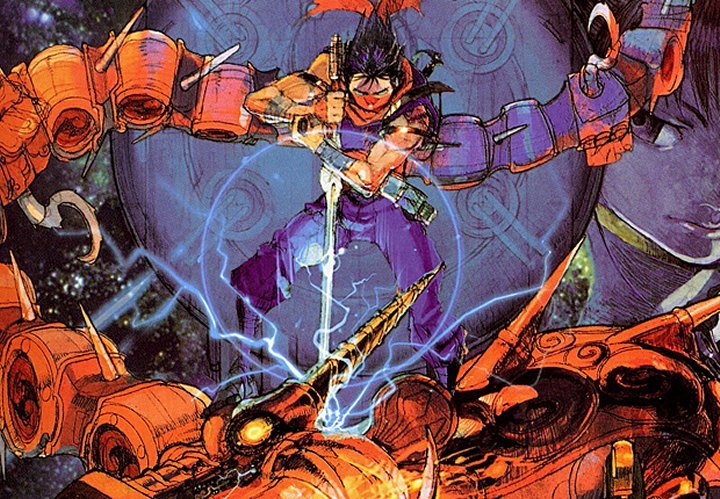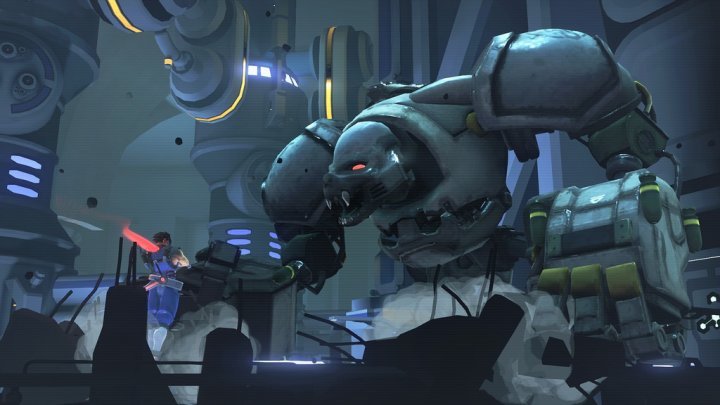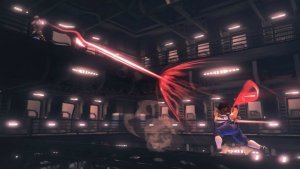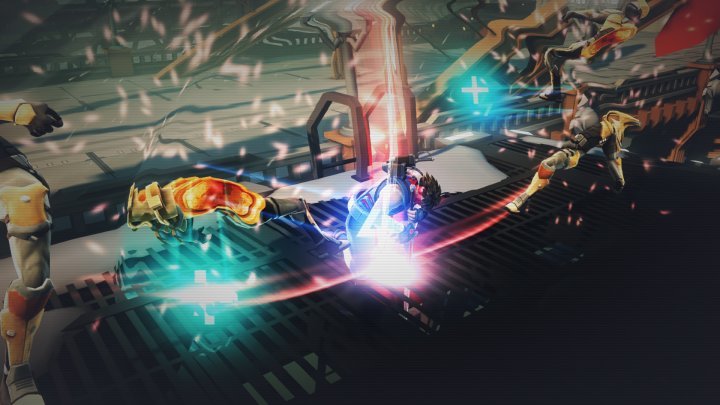The best new “Metroid-Vania” style platformer since Shadow Complex
Cue the music. Next, we see Strider, the red-scarfed ninja assassin, on a glider invading enemy territory to hack-and-slash the poor bastards with his Cypher Blade. The terrain looks like communist Russia a hundred years from now, but you really don’t know where he is. Does he care? Probably not because someone is about to taste the sharp tip of his blood-hungry sword. A ninja of this caliber cares not for such frivolous thoughts.
Wait, where’s the double jump? Why won’t my slide damage enemies? You’ll find no detailed introductions or tutorials about attacks or button layout anywhere. It’s a little odd and simplistic that Strider doesn’t have many usable buttons. All you see is a lifebar, a weird Japanese symbol, Strider himself, bad guys, and a map telling you where you need to go. This is how I felt as I began playing my first playthough of the campaign: a dude dropped into a vague mission without any explanation for anything, but I’m here and something is going to get sliced. A gamer of my caliber cares not for such frivolous knowledge.
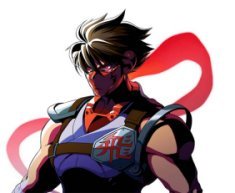 What about the newcomers, though?
What about the newcomers, though?
Strider, a ninja of A-Class quality, needs to invade cyber Russia to defeat the corrupt Grandmaster Meio. He is not the first Strider who donned the Cypher Blade. This story can be looked at as a retelling of the original story. Once Meio is defeated, you win at life and the future is safer. Until then, you will have to tackle his minions and hired guns who aim to post your decapitated head as bounty.
-Me (you’re welcome)
I get it. Double Helix wanted to make an ode to the OG Strider released back in 1989. In fact, this new Strider plays pretty close to the reinvented Strider 2 which was found on the PS One in 1999. Some consumers were confused because of the Strider II that was on the Sega Genesis in the early ‘90s; however, that game is largely ignored because it was made by Tiertex, not Capcom, despite looking strikingly similar to Strider ‘89. The most identifiable characteristics of Strider are his sleek suit and Cypher Blade which stays constant throughout his existence. If you’re familiar with Strider’s past, then you’ll see many recurring bosses and enemies, familiar skills, and quasi-similar environments.
Although, this new Strider is a side-scroller like the previous three linear designed titles, this one is modeled in the same vein of the “Metroid-Vania” games. Essentially, you’re placed inside a big map that contains branches that can only be accessed as time passes and when newer skills are acquired. It’s a style with heavy emphasis on discovery, trial and error, and memory peppered with a little controller dexterity. Strider is less about story and more about the exploration and battling. I found myself just enjoying the space while zipping through the dialogue like I was doing in Castlevania: Symphony Of The Night.
Deadly ninja skills are brought back to the pseudo U.S.S.R.
As the story is told, Strider’s skills inevitably expand. You start with the ability to slide past enemies, used like a dodge, and attack while standing, crouching, above your head, and in the air. The control feels natural and seamless once your hands get comfortable. You’ll find Strider to be quick, fast, responsive, and a joy to play. Each slash is very quick and cuts up enemies like a garbage disposal. Oh, and that weird Japanese symbol is like a rage meter that builds as you connect more hits. Once the circle completes a 360 degree on the gauge, the screen temporarily slows down and tints to give your attacks more power and range.
Eventually, you will get your double jump, a charge attack, and a slide that can be used to hurt as well as dodge. The Strider staples of robotic support in the form of an eagle, panther, and ouroboros (spherical guardians that revolve around him) will join you along your odyssey. Each of them performs a dual function, one for direct battle and a second for fast travel and reaching spots on the map. Everyone plays a part.
The Cypher Blade also gets upgraded with a total of four types/colors: Red is your standard blade that will get reflective properties, Yellow is a fire/explosive attack, Blue freezes enemies, and Purple is the only normal range attack with magnetic properties. The Tiertex Strider II used Kunai throwing stars and they found their way in this game (Capcom’s Striders never utilized them). Just like the Cypher Blade upgrades, each Kunai style can be upgraded to act in a similar fashion as the currently selected Cypher type (i.e. Purple magnet Kunai trail and follow enemies while Blue freezes baddies). Every weapon upgrade will also open up more previously locked doors.
One thing I found annoying about control is that you’ll find Strider over-reacting when standing near a cliff on a platform. He tends to run off the edge even I tap the direction. Sometimes I try switching Cypher Blade styles and it won’t activate amidst my attacks. I am sure it’s a mental lag on my part but I just try to switch quickly and I find myself constantly tapping the corresponding directional pad command more often than I want.
My only complaint about the Cypher Blade attack is that I don’t “feel” it strike enemies like it used to be in the first Strider. At first, the attacks felt hollow and don’t seem to effect, stun, or impede attackers. I mean, once the enemies get their beating, you’re treated with complimentary animations, but I just wish the digital “SHLINK” sound would return.
The rest of the sound is pretty good. I was jamming to most of the background music. It’s a fast paced mix that carries you around the map, and does a good job of musically describing the attitude of the situation and environment. Just don’t expect a lot from the voice acting. It’s neither horrible nor great which doesn’t really enhance the story experience and tends to plays out like a Saturday morning cartoon.
The kind of looks that can kill
What you see on screen is a treat considering it’s an “arcade” game. The graphics seem similar in quality to Shadow Complex. As a quick relation, I really enjoyed Shadow Complex’s gameplay and graphics, and I believe it’s among the best of its current ilk. I would definitely put Strider along the same quality. They look on par to each other yet differ in approach and style. You could argue Capcom’s Strider borrows a tidbit from EPIC Games’s Shadow Complex.
Strider’s animations can described as rich, smooth, and slick. Strider and the enemies coexist with the environments peacefully and also don’t conflict with the background or foreground. Thankfully, the camera never betrays you. There are many potential death traps trying to suffocate and distract you, so, you’re able to keep track of the incoming attacks without looking busy or unvisible. The game constantly keeps your retinas on a swivel.
Visually, this game reminds me of a Ferris Bueller quote. Strider moves pretty fast. If you don’t stop and look around once in a while, you miss it. At the beginning of the game, Strider scoots off his glider and you’re directed to move. Due to his overall speed and agility, you find yourself sprinting from zone to zone until you get more abilities to go back to previous parts of the map. When I was first thinking about the backgrounds, I thought they all looked the same, but after I started re-exploring it turns out I was just blazing through and not stopping to slash the roses.
I will say, there isn’t a particular zone that makes such a visual impact that imprints your memory from a “wow” factor. Once you start maneuvering and revisiting, you’ll start absorbing the subtleties and recognizing where you are by a particular roof or pattern of fast track portal. This is good because as you sprawl throughout the map, you’ll be attracted to investigating the nooks and crannies for Strider upgrades, alternate skin colors, and “POW” items (they unlock art, story intel, character bios, beacon runs, and survival modes). Make sure you save your game after you find them because if you die without saving, the items reset and must be retrieved all over again.
Never leave a single frame unturned
Personally, this is where I found most of my fun. I love going around, scaling walls and climbing ceilings at every square inch for things that can be found or new alleys to travel. The game encourages you do some exploring at first so you can extend your life bar to survive early on. The yearning to progress and uncover will beg you to come back because many doors will be locked as the campaign starts. In a nutshell, that’s a major ingredient in making a solid “Metroid-Vania”.
Playing through takes about 5 hours but could definitely be beaten in less time if you only sprinted and knew exactly where to go. If you were to search everywhere, I could easily see spending ten hours to get everything. One thing I don’t like is that there is only one campaign save to play at a time; so, that means you can’t have multiple saves to do campaign speed runs while another is used for finding all of the hidden items. There are extra modes you can play but you earn each challenge by finding the “Beacon Runs” and “Survival Missions” items hiding in the campaign mode. There is no other way to access these extra modes.
The last major thing about the replay value is the ease of the HARD setting. It isn’t that tricky once you get used to mastering the slide to dodge all of the extra ammo coming your way. I love fighting the bosses because the patterns remind me of Mega Man, but they’re just not as punishing on any difficulty setting. The only difference between difficulties I’ve found lies in the amount of bullets shot your way and possibly the damage output. Grandmaster Meio is far from impossible; though, you are treated with a decent battle finale` that doesn’t disappoint. By the time you near the completion of the campaign and decide to collect a majority of the upgrades, Strider feels pretty unstoppable.
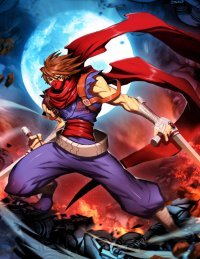 If you wanted to make life more difficult, I guess one could skip unnecessary upgrades like health and energy bars extensions. Honestly, the most unforgiving moments happened between bosses. For example, the only way out of a tunnel is by climbing a 45 degree angle upward against sewer crabs who can knock you down with a slime projectile while staying out of range of your uncharged attack, and if you try charging the blade to remove their damage-resistant shell then they will run across the ceiling to knock down into a hazard below (you’ll learn to hate those little bastards).
If you wanted to make life more difficult, I guess one could skip unnecessary upgrades like health and energy bars extensions. Honestly, the most unforgiving moments happened between bosses. For example, the only way out of a tunnel is by climbing a 45 degree angle upward against sewer crabs who can knock you down with a slime projectile while staying out of range of your uncharged attack, and if you try charging the blade to remove their damage-resistant shell then they will run across the ceiling to knock down into a hazard below (you’ll learn to hate those little bastards).
I was very much divided in how I rated Strider. It isn’t a super difficult campaign and you have to enjoy the kind of extra available modes that you must first discover to play. With that said, I find myself addicted to playing solely the campaign. Right after I beat Strider and watched the ending, I was hitting “start” to begin all over again. The optional bosses and hidden items keeps the inner completionist entertained.
Alas, part of me wants me to be unforgiving for how it thrusts you into the game, shares a generally uninteresting and predictable story, and suffers from some minor control issues. The other half of me finds this version of Strider endearing and loyal to its brand. It’s also an honest and satisfying offering with style and flavor you would expect from a “Metroid-Vania”. This style of game is not for everyone and I am not sure if unfamiliar players would appreciate what it does best. However, Strider is a must-download for fans of the genre because it won’t disappoint where it matters most. Ya know, how much fun it is to play.
This review is based off of a retail, digital copy of the XBOX 360 version of Strider developed by Double Helix and published by Capcom. Strider is $15 and is available for download on XBOX 360, XBOX ONE, PS3, PS4, and Windows.
- Responsive, Smooth
- Begs to be Explored
- Limited Replay Value
- Lasckluster Storytelling

